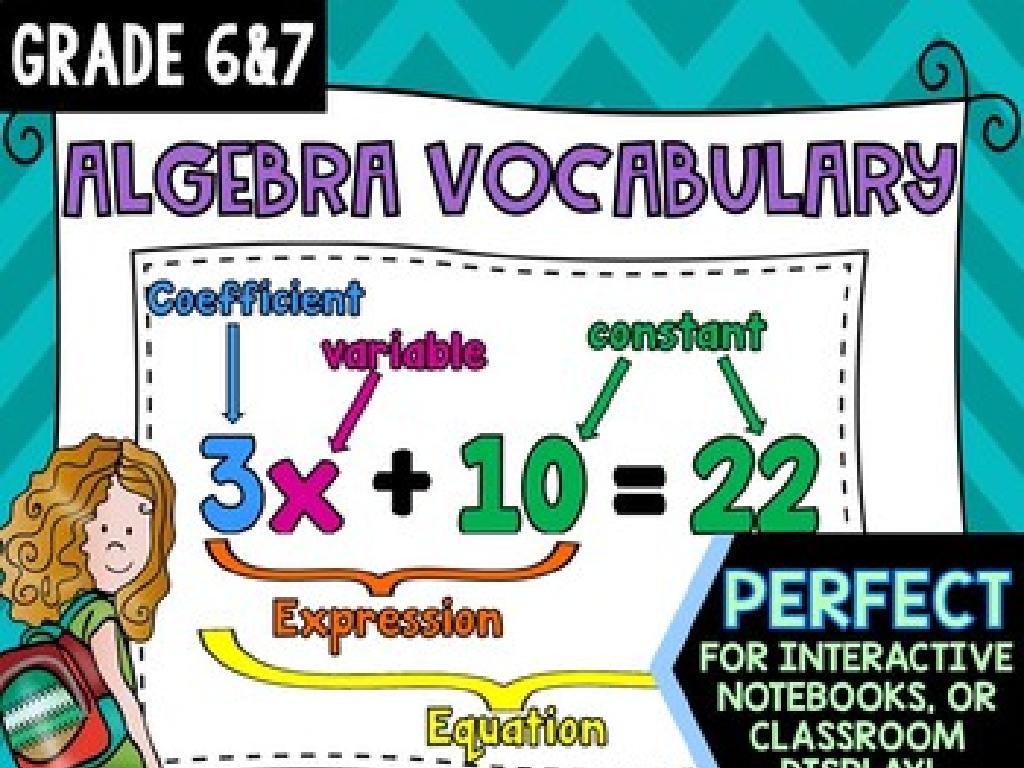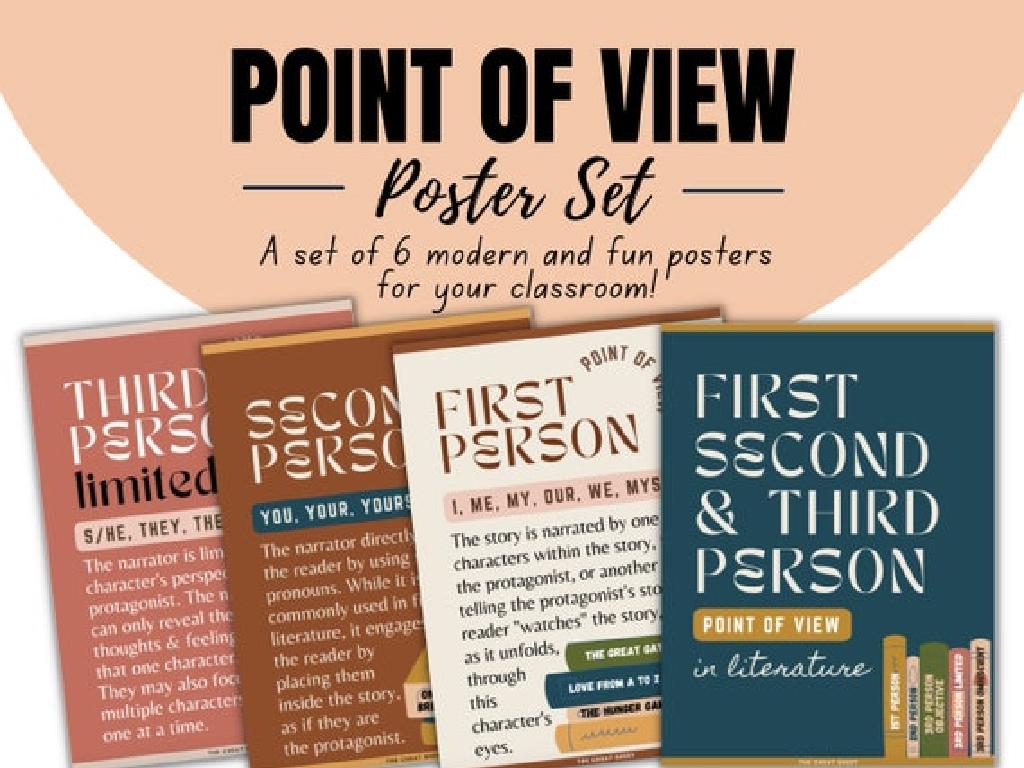Name The 50 States
Subject: Social studies
Grade: Third grade
Topic: States
Please LOG IN to download the presentation. Access is available to registered users only.
View More Content
Exploring the 50 States of the USA
– Introduction to USA geography
– The USA is made up of 50 unique states, each with its own location and border.
– Learn all 50 states
– We’ll memorize state names and find them on the map.
– Geography’s role in daily life
– Geography helps us with directions and understanding where we live.
– Significance of state knowledge
– Knowing states helps in travel, weather reports, and news.
|
This slide introduces third-grade students to the geography of the United States, emphasizing the importance of knowing all 50 states. Start by showing a map of the USA to familiarize students with the country’s layout. Explain how geography affects our daily lives, from giving directions to understanding weather patterns. Highlight the practical reasons for learning the states, such as knowing where they are when mentioned in news or while traveling. Encourage students to share any states they already know and to think about how geography plays a role in their own lives. This will set the foundation for more in-depth learning about each state.
What is a State?
– A state is a community with its own government
– Each state fits into the USA like a puzzle piece
– States have unique governments and symbols
– For example, each state has a different flag
– Every state has its own special history
– Think of the story of your state’s founding
|
This slide introduces the concept of a state to third-grade students. Begin by explaining that a state is a specific area where people live and work together under one government, which makes laws and keeps everyone safe. Compare the United States to a large puzzle, and each state is a piece of that puzzle, fitting together to make one whole country. Highlight that while all states are part of the USA, they each have their own set of rules, symbols like flags and birds, and unique histories that tell the story of how they were founded and have grown. Encourage students to think about what makes their own state special and to consider how different states might have different traditions and landmarks.
Regions of the United States
– US divided into four regions
– Northeast, Midwest, South, West
– Characteristics of each region
– Northeast: busy cities, Midwest: farmlands, South: warm, West: mountains & coastlines
– States as region examples
– Northeast: New York, Midwest: Ohio, South: Texas, West: California
– Exploring regional diversity
|
This slide introduces the concept of the United States being divided into four distinct regions, each with its own unique characteristics and examples of states. The Northeast is known for its bustling cities and rich history. The Midwest is often associated with its expansive farmlands and the ‘heartland’ of America. The South is characterized by its warm climate and hospitality. The West is famous for its diverse landscapes, including mountains, forests, and coastlines. Encourage students to think about what makes each region special and to learn states as part of these larger regions. This will help them understand the geographical and cultural diversity of the United States.
Exploring the Northeast Region
– Locate Northeast states on a map
– Name each state in the Northeast
– Discover fun facts about the states
– Learn about Maine’s famous lobsters
– Understand regional characteristics
– Discuss why many states in the Northeast have cold winters
|
This slide introduces students to the geography of the United States, focusing on the Northeast region. Start by showing a map and helping students locate and name each of the Northeastern states. Highlight a few fun facts, such as Maine being known for its lobsters, or the common cold winters experienced in this region. This will help students connect the states with memorable characteristics. Encourage students to think about what makes their state unique and to share any personal experiences or knowledge they have about the Northeastern states.
Exploring the Midwest States
– Locating Midwest states on a map
– Use a map to find where each state is.
– Naming each Midwest state
– Practice saying all the state names.
– Discovering fun Midwest facts
– Learn about the Great Lakes and farming.
– Understanding the Midwest’s role
– Discuss how the Midwest contributes to America.
|
This slide is part of a series on learning all 50 states, focusing on the Midwest region. Begin by showing a map of the United States and help students identify the Midwest states. Then, work on memorizing each state’s name with repetition and possibly a song or rhyme. Share interesting facts about a few states, such as the importance of the Great Lakes or the prevalence of agriculture in the region. Discuss how the Midwest is often called ‘America’s Heartland’ and its significance in terms of food production and industry. Encourage students to share any personal connections they have with the Midwest. For homework, they could bring in a fun fact about any Midwestern state to share with the class.
Exploring the South Region
– Identify Southern states
– States like Texas, Florida, and Georgia are part of the South.
– Locate states on a map
– Can you find these states on the United States map?
– Fun facts about the South
– Did you know? Florida is home to the famous Disney World!
– Why the South is unique
– The South has a rich history and distinct cultural traditions.
|
This slide is part of a series on learning the 50 states, focusing on the South region. Encourage students to identify each state in the South by name and location on a map. Highlight fun facts about a few Southern states to make the learning process engaging. For example, mention that Texas is the second-largest state in the U.S., or that Georgia is known as the Peach State. Discuss the unique aspects of the South, such as its historical significance, cultural traditions, and contributions to music and cuisine. This will help students appreciate the diversity within the United States. Prepare a map activity where students can label the Southern states and a trivia game with fun facts to reinforce their learning.
Exploring the Western States
– Identifying Western states
– Learn the names and locations of states like California, Nevada, and Oregon.
– Fun facts about the West
– Did you know California is known as the Golden State and is home to the largest tree in the world?
– Geography of the West
– The West has mountains, deserts, and coastlines.
– Cultural significance
– The West is known for its diverse cultures and the film industry in Hollywood.
|
This slide is focused on teaching students about the Western region of the United States. Start by showing them a map and helping them identify each state in the West. Share fun facts, such as California being the Golden State or Nevada’s famous Las Vegas Strip. Discuss the varied geography, from the Rocky Mountains to the Pacific coastline. Highlight the cultural diversity and significant industries like technology in Silicon Valley and entertainment in Hollywood. Encourage students to share any experiences or knowledge they have of the Western states. This will help them connect personally with the material and remember the information more effectively.
Interactive Map Exploration
– Explore the 50 states on a map
– Click to learn each state’s name
– Find a unique fact about each state
– Each state has its own bird, flower, or landmark
– Engage with the map’s features
– Use tools like zoom and legends to discover more
|
This slide introduces an interactive activity using a digital map of the United States. The goal is to help students become familiar with the geography of the country and learn the names of all 50 states in a fun and engaging way. Each student will click on a state to reveal its name and a unique fact about it, such as the state bird, flower, or an important historical landmark. Encourage students to explore the map’s features, such as zooming in and out and using the legend to understand more about each state. This activity can be done individually or in small groups to facilitate cooperative learning. As a follow-up, students can be asked to draw their favorite state and share the unique fact they learned about it.
Memory Tricks for Remembering the States
– Learn tricks to remember states
– Associate states with shapes
– Think of Texas as a big cowboy hat
– Use symbols and names
– Link the name ‘Montana’ with mountains
– Practice with class examples
– We’ll remember together using a map
|
This slide is aimed at helping third-grade students develop mnemonic devices to remember all 50 states. Encourage them to create associations that make sense to them personally, such as visualizing the shape of Texas as a cowboy hat or connecting the name ‘Montana’ with its mountainous landscapes. Use a U.S. map during the lesson to point out these associations and practice as a class. Provide additional examples, like the ‘mitten’ shape of Michigan, and ask students to come up with their own. This interactive approach will help solidify their understanding of the geography of the United States and make the learning process enjoyable.
Class Activity: State Bingo!
– Let’s play State Bingo!
– Receive your unique bingo card
– Each card has different state names
– Listen for state names to mark
– Pay attention as states are called out
– Shout ‘Bingo!’ when you get five in a row
– The first with a full row wins a prize!
|
State Bingo is a fun and interactive way to help students learn the names of the 50 states. Each student will receive a bingo card with a random selection of state names. As the teacher calls out the names of states, students will mark them on their cards. This activity encourages active listening and quick recognition of state names. To ensure all students remain engaged, consider having small rewards for any student who participates. Variation in activities can include: 1) Reverse Bingo, where the last to fill their row wins, 2) Shape Bingo, where students form the initial of their state, and 3) Blackout Bingo, where the goal is to cover all states on the card.






